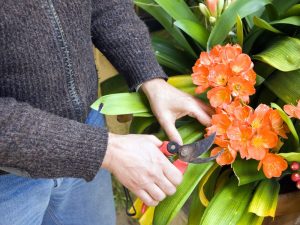Waist high garden beds are a game-changer for gardening enthusiasts who want to enjoy planting without the strain of constant bending or kneeling. These elevated planters provide ergonomic benefits while adding a stylish touch to any outdoor space. Choosing the right waist high garden bed can significantly impact your gardening experience by ensuring durability, functionality, and ease of use. This guide will help you navigate the best options and provide insights into what to look for when purchasing.
5 Best Waist High Garden Beds Available on Amazon
Contents
Finding the perfect waist high garden bed can make all the difference in creating an enjoyable and efficient gardening experience. Whether you’re looking for durability, design, or functionality, these top-rated options on Amazon offer something for every gardener. Below is a list of the five best waist-high garden beds, each chosen for its features, quality, and customer reviews.
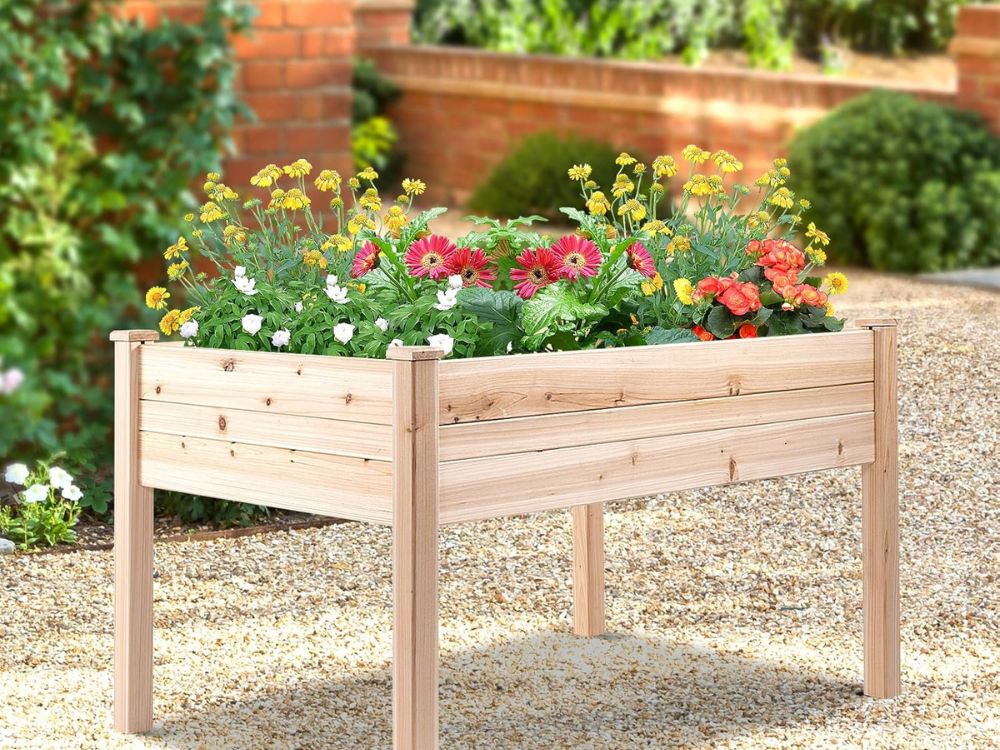
Best Choice Products 72x23x30in Raised Garden Bed
This large elevated wooden garden bed offers ample planting space, making it ideal for gardeners with diverse plant varieties. It includes a central divider for better organization and six sturdy legs for enhanced stability. The durable wood construction and natural finish blend seamlessly into outdoor settings. Its raised design ensures ergonomic convenience, reducing the strain of bending and kneeling.
Backyard Expressions 48″x34″ Raised Garden Bed
With a substantial 440 lb soil capacity, this garden bed is perfect for growing a variety of flowers, vegetables, or herbs. Its elevated height and natural wooden design enhance both functionality and aesthetics. The sturdy legs and large planting area make it suitable for avid gardeners. This bed’s natural wood finish adds rustic charm to patios or backyards.
Raised Garden Bed With Legs 48x24x30″
Crafted from natural cedar wood, this garden bed combines durability with elegance. It features a bed liner that protects the wood from moisture while maintaining a healthy growing environment for plants. The compact size is perfect for smaller spaces, yet it offers enough depth for deep-rooted plants. Its ergonomic height provides easy access for gardening tasks without back strain.
Yaheetech 8ft Wooden Raised Garden Bed
This spacious 8-foot garden bed is designed for gardeners seeking maximum planting capacity. Made from untreated wood, it is ideal for growing organic vegetables and flowers. The raised height improves soil control and accessibility, making it comfortable to use. Its natural wood finish and robust design make it a versatile addition to any garden.
Giantex Raised Garden Bed with Legs
This solid wood elevated planter features a compact, waist-high design that promotes comfort during gardening. It is perfect for flowers, herbs, and vegetables, with adequate depth for healthy root growth. The sturdy construction and natural aesthetic make it both functional and visually appealing. Its easy-to-assemble design ensures a hassle-free gardening experience.
Benefits of Using Waist High Garden Beds
Gardening is a fulfilling hobby, but it can be physically demanding, especially for those with mobility issues or limited space. Waist high garden beds offer an innovative solution, combining ergonomic design with practicality. These elevated planters not only make gardening easier but also enhance the health and growth of your plants. Let’s explore the many benefits of using waist high garden beds and why they’re a worthwhile investment for your garden.
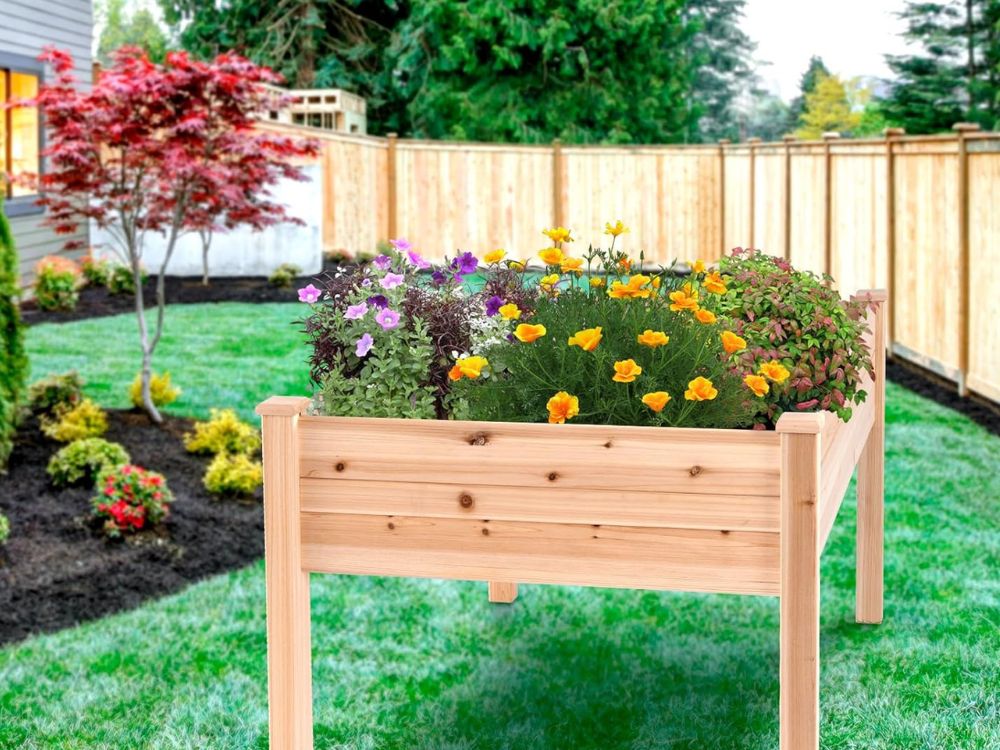
Ergonomic Design for Comfort
One of the primary advantages of waist high garden beds is the ergonomic design. Traditional gardening often involves bending, kneeling, or squatting, which can lead to back and joint pain over time. Elevated garden beds are designed to reduce these physical strains by bringing the gardening surface up to a comfortable working height.
This feature is particularly beneficial for seniors, individuals with arthritis, or anyone with mobility challenges. With waist high garden beds, you can focus on enjoying your gardening experience without worrying about physical discomfort.
Improved Accessibility
Accessibility is another key benefit of waist high garden beds. Their elevated height makes them suitable for people who use wheelchairs or have difficulty bending down. The raised design allows gardeners to reach plants easily from all sides, ensuring that everyone can participate in gardening activities.
For families, this accessibility means that gardening can become a shared activity. Children and adults alike can enjoy working together to grow flowers, vegetables, or herbs in an inclusive and engaging environment.
Enhanced Soil Control
Waist high garden beds provide superior control over soil conditions compared to traditional in-ground gardening. You can fill these planters with high-quality soil that’s tailored to the needs of your plants. This reduces the risks associated with poor soil quality, such as inadequate drainage or nutrient deficiencies.
Additionally, waist high garden beds allow for better management of soil moisture. The raised design promotes efficient drainage, preventing waterlogging while retaining enough moisture for healthy plant growth.
Fewer Pest and Weed Issues
Elevated garden beds naturally deter many common pests and weeds. The raised height creates a physical barrier that’s more challenging for crawling pests, such as slugs and snails, to access. Similarly, weeds are less likely to invade these beds since they’re isolated from ground-level soil.
This reduced exposure to pests and weeds means less time spent on maintenance tasks like weeding or applying pest control measures. Instead, you can focus on nurturing your plants and enjoying their growth.
Optimized Space for Gardening
For those with limited outdoor space, waist high garden beds are a compact and efficient solution. They are ideal for patios, balconies, or small backyards, allowing urban gardeners to maximize their available space.
The vertical design of these beds also encourages creative planting arrangements. You can grow a variety of plants, from deep-rooted vegetables to sprawling flowers, without worrying about overcrowding or limited soil depth.
Prolonged Gardening Season
Waist high garden beds can extend your gardening season, especially when paired with covers or cold frames. The elevated design allows for better temperature regulation, as the soil in these beds warms up faster in the spring and retains heat longer into the fall.
This temperature advantage enables you to start planting earlier and continue harvesting later, giving you more time to enjoy your garden.
Reduced Physical Effort
Gardening with waist high garden beds eliminates many of the labor-intensive tasks associated with traditional gardening. Tasks like tilling, digging, and bending are significantly minimized, making gardening more accessible to people of all ages and physical abilities.
The reduced physical effort also means less wear and tear on your tools, saving you time and money in the long run.
Aesthetic Appeal
Beyond their practical benefits, waist high garden beds add a stylish and organized look to any outdoor space. They come in various materials, including wood, metal, and composite, allowing you to choose a design that complements your garden’s aesthetic.
The clean, elevated lines of these beds create a polished appearance, making them a focal point in your yard, patio, or balcony. They also help keep your gardening area tidy by containing soil and plants within a designated space.
Adaptability for Different Plants
Waist high garden beds are versatile and can accommodate a wide range of plants, from vegetables and herbs to flowers and ornamental shrubs. Their depth and spacious design make them suitable for shallow and deep-rooted plants.
You can even customize your planting arrangements to create a visually appealing mix of colors, textures, and heights. This adaptability ensures that your garden bed remains functional and beautiful throughout the year.
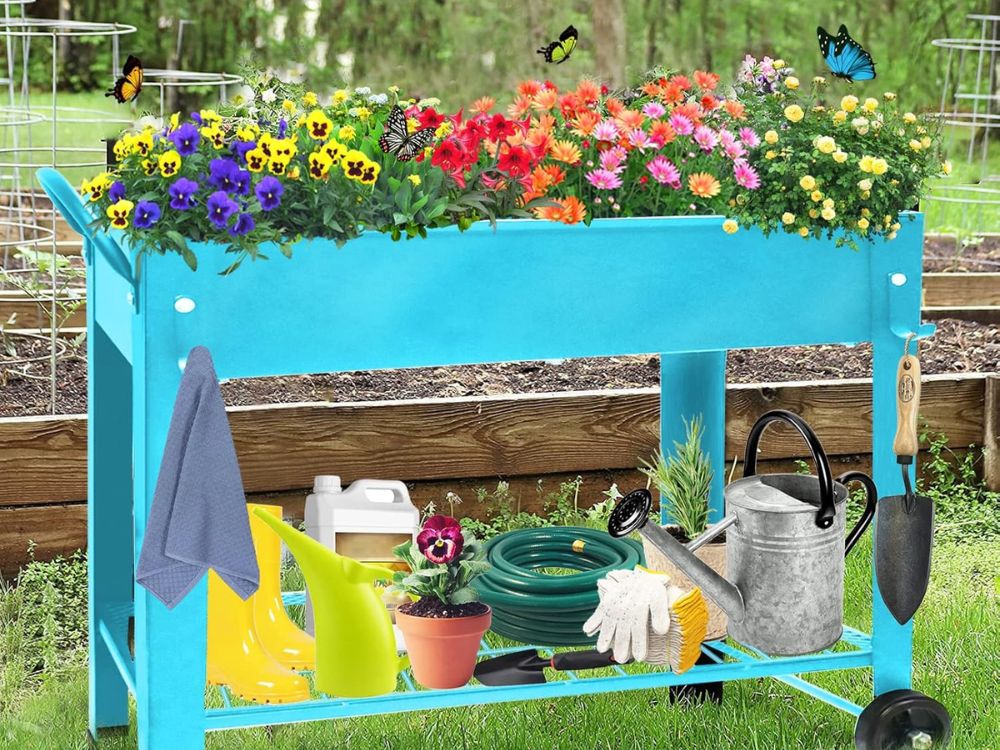
Promotes Eco-Friendly Gardening
Using waist high garden beds encourages sustainable gardening practices. These beds are often made from eco-friendly materials and can be filled with organic compost and soil, reducing the need for synthetic fertilizers.
Their efficient drainage systems also minimize water waste, making them an environmentally conscious choice for gardeners who prioritize sustainability.
Waist high garden beds offer a multitude of benefits, making them an excellent choice for gardeners of all skill levels. Their ergonomic design, accessibility, and ability to improve plant health create a comfortable and efficient gardening experience. Whether you’re looking to grow vegetables, herbs, or flowers, these elevated beds provide the perfect solution for enjoying your garden without the strain. By investing in a waist high garden bed, you’ll not only enhance your gardening practice but also create a beautiful and functional outdoor space.
Materials and Features to Consider When Buying a Waist High Garden Bed
Choosing the right waist high garden bed involves more than just picking a design that looks good. The materials and features of the garden bed play a crucial role in its durability, functionality, and overall gardening experience. Below, we’ll break down the most important materials and features to consider when selecting the perfect waist high garden bed.
Common Materials for Waist High Garden Beds
Wood
Wood is a popular material for waist high garden beds due to its natural aesthetic and versatility. Cedar and redwood are excellent choices because of their resistance to rot and pests. Treated wood may also last longer, but ensure it’s safe for gardening to avoid chemicals leaching into the soil.
Metal
Metal garden beds, typically made of galvanized steel or aluminum, are durable and weather-resistant. They often come with protective coatings to prevent rust and corrosion. Metal beds provide a sleek, modern look and are ideal for gardeners who prioritize durability.
Plastic or Composite
Plastic and composite materials offer lightweight, affordable, and weather-resistant options. They are easy to maintain and often come in various colors and designs. Composite materials, which are blends of wood and plastic, provide the look of wood with the added benefit of enhanced durability.
Key Features to Look For
Height and Ergonomics
The height of the garden bed should allow you to work comfortably without bending or kneeling. Standard waist high garden beds range from 30 to 36 inches in height, which suits most gardeners. Check the dimensions to ensure it meets your ergonomic needs.
Size and Capacity
Consider the planting space you need. Larger garden beds are ideal for growing a variety of plants, while smaller ones work well for compact areas like balconies or patios. The depth of the planter is also important for accommodating different root systems.
Drainage System
Proper drainage is essential for preventing waterlogged soil, which can harm your plants. Many waist high garden beds come with built-in drainage holes or liners that promote water flow while keeping the soil in place. Look for models with adjustable drainage systems for added flexibility.
Durability
A garden bed should withstand exposure to the elements. Weather-resistant materials like treated wood, galvanized steel, or UV-protected plastic ensure the bed remains sturdy and functional for years. For wooden beds, consider models with protective finishes to prevent rot and decay.
Mobility Options
If you plan to move your garden bed around, look for models with wheels or casters. Mobile garden beds are especially useful for patios or areas where sunlight varies throughout the day. Ensure the wheels lock securely to keep the bed stable when in use.
Additional Considerations
Assembly and Maintenance
Choose a garden bed that’s easy to assemble and maintain. Many models come with pre-drilled holes, detailed instructions, or even tools to simplify setup. For maintenance, consider how easy it will be to clean and treat the materials over time.
Built-In Liners and Dividers
Some garden beds include liners that protect the material from moisture and help retain soil. Dividers are also useful for organizing plants, especially if you’re growing a mix of flowers, herbs, and vegetables.
Aesthetic Appeal
Your garden bed should be functional and enhance the look of your outdoor space. Choose a material and design that complements your garden’s aesthetic, such as rustic wood, sleek metal, or colorful composite.
When selecting a waist high garden bed, it’s important to consider materials and features that align with your gardening needs and style. Whether you prioritize durability, ease of use, or aesthetic appeal, paying attention to these details will ensure you find a garden bed that enhances your gardening experience and stands the test of time.
Caring for Your Waist High Garden Bed
Proper care for your waist high garden bed ensures its longevity and helps maintain a healthy growing environment for your plants. Regular maintenance, seasonal preparation, and thoughtful planting techniques can make a significant difference in the performance and appearance of your garden bed. Below are essential tips to keep your waist high garden bed in excellent condition.
Routine Cleaning and Maintenance
Keeping your garden bed clean helps prevent the buildup of debris and pests. After each growing season, remove dead plants, leaves, and weeds to maintain a clean planting area. Use a soft brush or cloth to wipe down wooden or metal surfaces to prevent dirt and moisture from causing damage.
For wooden garden beds, check for signs of rot or damage and apply a protective sealant if needed. Metal beds should be inspected for rust and treated with anti-rust sprays to keep the structure intact. Plastic or composite beds are low-maintenance but still benefit from occasional cleaning with mild soap and water.
Protecting Your Garden Bed from Weather
Exposure to the elements can wear down your garden bed over time. To extend its life, consider using weatherproof covers during heavy rain or snow to shield it from excess moisture. If your garden bed is mobile, move it to a sheltered area during extreme weather conditions.
For wooden beds, reapply a weather-resistant stain or sealant annually to prevent rot and cracking. Metal beds may need periodic repainting with rust-resistant paint to protect against corrosion.
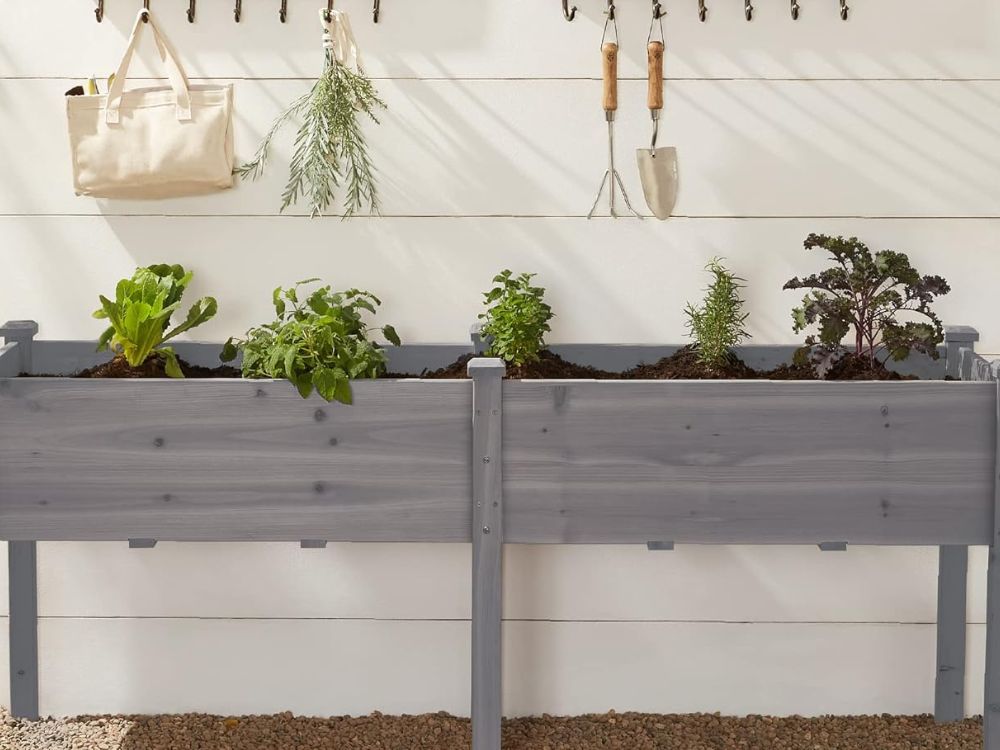
Preparing the Bed for Different Seasons
Spring
At the start of the growing season, clean the garden bed thoroughly and refresh the soil. Add compost or organic fertilizer to replenish nutrients lost over the winter. Inspect the drainage system to ensure it’s functioning properly and make any necessary adjustments.
Summer
Monitor soil moisture levels frequently during the hotter months to prevent plants from drying out. Mulching the soil can help retain moisture and reduce water evaporation. Check for pests regularly and address any infestations promptly.
Fall
After harvesting, clear out all plant material and prepare the bed for the colder months. Add a layer of organic matter, such as compost or mulch, to enrich the soil and protect it from frost. Cover the bed with a tarp or breathable fabric to prevent excess moisture from rain or snow.
Winter
For garden beds not in use during winter, empty the soil if possible and store the bed in a sheltered area. If removing soil isn’t feasible, cover the bed to prevent water pooling and freezing.
Soil and Plant Care
Healthy soil is key to successful gardening in a waist high garden bed. Rotate crops each season to prevent nutrient depletion and reduce the risk of pests and diseases. Incorporate compost or organic matter regularly to maintain soil fertility.
When planting, choose companion plants that thrive together and support each other’s growth. Avoid overcrowding the bed, as this can lead to poor airflow and increase the likelihood of disease.
Long-Term Maintenance Tips
- Check Fasteners and Joints: Over time, screws and bolts may loosen. Periodically tighten all fasteners to maintain stability.
- Inspect Liners and Drainage Systems: Ensure liners remain intact and replace them if they show signs of wear. Clean drainage holes to prevent blockages.
- Avoid Overloading: Follow weight recommendations for your garden bed, especially for mobile models, to prevent structural damage.
Caring for your waist high garden bed is an ongoing process that pays off in the form of a thriving garden and a durable planter. By performing routine maintenance, protecting the bed from harsh weather, and practicing good soil and plant care, you’ll ensure that your garden bed remains a valuable part of your outdoor space for years to come.
Conclusion
Choosing the right waist high garden bed can transform your gardening experience into an enjoyable and efficient activity. The options highlighted offer durability, ergonomic benefits, and features to suit various needs and spaces. Investing in a high-quality garden bed ensures you can grow healthy plants while enjoying the convenience of an elevated design.
We have more guides to help you get the most out of your garden bed. Read our garden bed layout and planning guide next!




